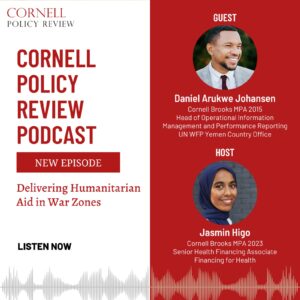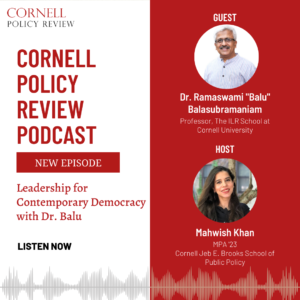
Unsplash | Fusion Medical Animation
Written by: Kara Guse
Edited by: Tiffany Agard and James Warren
The COVID-19 outbreak was announced over seven months ago at the very close of 2019, but countries are still struggling to contain the spread of COVID-19 and mitigate its devastation to the economy, public health, and social well-being.1 Most of the discussion concerns how public health and fiscal policy should address this crisis when, at its core, COVID-19 is mostly the product of our mismanagement of nature. COVID-19 has many labels – a coronavirus, a severely infectious disease, a pandemic – but one of its less discussed labels is its classification as a zoonotic disease.
How is COVID-19 Linked to Nature?
Zoonotic diseases, or zoonoses, originate from naturally-occurring pathogens in vertebrate animals hosts, and are usually harmless to animal health.2 COVID-19 is not the only zoonotic disease to emerge in the 20th-21st century. 60% of the 335 diseases identified between 1960 and 2004 were classified as zoonotic (Figure 1) and the CDC estimates that 75% of new and emerging diseases are zoonotic.3;4 In 2012, 56 zoonotic diseases accounted for 2.5 billion cases of human illnesses and 2.7 million deaths.5

Figure 1: Number of Emerging Infectious Diseases (EID) per Decade – (a) Pathogen type, (b) transmission type, (c) drug versus non drug-resistant and (d) transmission mode where vectors are organisms that can transfer diseases between humans and animals, which comprise of parasites and other insects. The spike in the 1980s is mainly due to HIV. Source: Jones et al., 2008
Not all epidemic zoonoses are dangerous, but in rare cases, their effects are devastating. HIV originated from chimpanzees, where the disease was passed when hunters came in contact with infected chimpanzee blood.6 As of 2018, HIV has claimed 32 million lives.7
The difference between zoonotic diseases now and zoonotic diseases in the past is not necessarily their fatality or virality, but rather increased risk of human contact.8 Infections from new or mutated pathogens have quadrupled in the past 50 years with the overwhelming majority a result of human behaviors that severely degrade the natural environment – 50% of zoonotic emerging diseases stem from land-use change for cities and agriculture.9;10
By expanding into natural habitats, humans force animals into smaller spaces, increasing their density and their tendency to find shelter in human communities.11 Expanding suburbs into forests caused the emergence of Lyme disease in the U.S. in 1975, which is now the most common fatal tick-borne disease.12;13 The 2014-2016 Ebola outbreak, which had an average fatality rate of 50%, was significantly clustered in areas of recently deforested land.14;15 Forest clearance disrupted fruit bat behavior and density, facilitating the spillover of the Ebola virus from fruit bats to communities.16
Landscape degradation also facilitates zoonotic pathogen contact with resource systems.17 H5N1, or “bird flu”, has a fatality rate of about 60% and is most often transmitted to humans by ingesting infected poultry.18 H5N1 does not naturally occur in domesticated animals but is transmitted from wild waterfowl that have come into increased contact with domestic animals.19 These increased interactions are the result of wetland and other waterfowl habitat destruction.
Preserving healthy environments also maintains conditions that prevent diseases from spreading.20 Deforestation in Brazil created unshaded and shallow water bodies – ideal conditions for mosquito breeding – leading to a 3.3% increase in malaria cases per 10% increase in deforestation.21 Furthermore, habitat fragmentation can disproportionately harm non-reservoir species or animals that do not carry many zoonotic pathogens, as opposed to reservoir species like mice and bats.22 Decreasing the biodiversity of an area through natural degradation thus weakens the barrier that non-reservoir species provide.
What are the Costs of Not Protecting Nature?
Global progress on preventing the physical and subsequent economic loss from nature so far is insufficient.23 The World Wildlife Fundin 2019 concluded, on average, animal populations are 60% smaller than they were in 1970, and the New York Declaration of Forests concluded 6 billion hectares of land have been degraded worldwide – an area about 20 times the size of France.24;25
As a result of nature’s degradation, humans are losing the benefits and services they receive from nature, called ecosystem services.26 Ecosystem services include benefits like forests absorbing carbon from the atmosphere and potable water from watersheds. In total, between 1997-2011, $4.3-20 trillion in ecosystem services were lost per year from land conversion (e.g. deforestation to make room for plantations) and $6-11 trillion per year lost from land degradation.27,28 This environmental loss has also translated to increased vulnerability of resources. For example, from 1998 to 2013, 20% of cropland and 27% of rangeland showed a continuous decline in productivity.29
Besides resource depletion, nature degradation has led to an increasing frequency and magnitude of natural disasters. The U.S. endured more than twice the number of billion-dollar disasters in 2010-2019 than from 2000-2009 (Figure 2), with the National Oceanic and Atmospheric Administration citing climate change and environmental degradation as the primary contributing factors.30 For example, wetlands are a natural buffer against storm surges and prevented $625 million in flood damages from Hurricane Sandy, but their erosion from human activity has increased damage induced by storms.31 Coral reefs around the world decrease incoming wave energy by 85%, protecting the lives of the 200 million who live by coastlines.32 providing. Out of the total $1.76 trillion in damage from U.S. natural disasters since 1980, $1.16 occurred in the last 15 years.33

Figure 2: Billion Dollar Disasters in the U.S. from 1980 – 2019 – Bars are color-coded according to natural disaster type with the left axis showing the frequency of events. The running annual cost is displayed with the purple line with a 95% confidence interval along with the five-year mean costs in the dark purple line; the right axis displays cost in US billions of dollars. Bars in 2005-2019 are taller along with the annual costs line, showing increasing frequency and costs to the US. Source: NOAA Climate.gov
The difficulty with environmental reform is that it requires policymakers to frame decisions in terms of losses avoided instead of benefits accrued. In other words, it is more politically acceptable to create economic gain, such as through increasing natural resource exports or converting land for infrastructure, instead of arguing that when nature is preserved, humans avoid probable harm in the form of natural disasters and resource vulnerability.
Models may only be predictions, but so far they have proven remarkably accurate. As experts warned of the projected exponential spread of COVID-19, COVID-19 deaths grew from 55,700 on March 15th to around 350,000 on May 26th, 2020.34 Scientists are equally adamant about the costs that will be realized through resource insecurity if our damage to nature continues.35 In addition, protecting nature will and perhaps even another COVID-19-like disease.
How Do We Save Nature?
Even before the emergence of COVID-19, most intergovernmental and academic reports urged that the public and private sector must stop practices deleterious to species and habitats. For this to occur, businesses and governments need to incorporate the monetary benefits or losses that result from preserving or losing natural habitat into their decision making. Acknowledging these costs will justify better environmental practices and, as a result, protect ecosystem services.36 Many countries, such as those in the EU, Brazil, and Vietnam have already taken steps to acknowledge the monetary benefits of protecting nature and have set up Payment for Ecosystem Service systems where landowners are compensated for responsible land management in areas of high environmental importance, such as forests and wetlands.37 Since these actions protect a predictable stream of ecosystem services, the government rewards these landowners through direct payments.
Monetary benefits and losses can be estimated through valuing ecosystem services.38 Ecosystem service models are essential for creating the business case for responsible environmental management, but they will not be useful unless paired with policies that apply these figures within national budgets and encourage businesses to do the same within risk-management procedures.
For governments to acknowledge the benefits of nature preservation, they must curtail subsidies that exacerbate harmful behaviors such as resource exploitation and land-use change. Many subsidies are created without accounting for their damage to environments and the resulting monetary loss of ecosystem services.39 For example, agricultural subsidies that lower farm input costs can encourage fertilizer overuse, which may temporarily increase crop yield but ultimately destroy nearby water sources and soil quality.40 Some of these subsidies limit resource efficiency; after New Zealand eliminated all agricultural subsidies in 1986, fertilizer use dropped by 50%, soil and river pollution markedly decreased, and New Zealand’s meat sector rose to be the second most efficient in the world.41 Other government expenditures harmful to nature include infrastructure construction that fails to safeguard against excessive deforestation or habitat fragmentation.42
In 2019, the OECD concluded that governments offer $500 billion per year in support of potentially harmful actions to biodiversity – nearly 5 to 6 times the amount of finance pledged in national budgets to improve biodiversity (e.g., national conservation programs).43 Reversing this trend requires nations to better analyze the effects of their policies and monetary aid in potential ecosystem service losses.
Furthermore, governments must also consider using nature restoration to solve social problems. For example, ecosystems can alleviate air pollution using forests that naturally absorb carbon; the world now can sustain 900 million hectares of forest and remove 205 billion tons of carbon from the atmosphere each year.44 Some functions that would be expensive for man-made infrastructure to achieve would be best carried out through protecting “green infrastructure”, or natural infrastructure, that already naturally provides essential services – more than 90% of the world’s cities and 75% of accessible freshwater sources depend on forested watersheds for natural water filtration.45,46
Public policy must also establish legal frameworks to prevent businesses and individuals from devastating the environments on which they inherently depend. Currently, the adoption of environmentally-friendly business activities is mainly voluntary and not universally employed among all companies. Identifying the environmental risk of company operations, and mandating the enforcement of control measures will help drive risk-mitigation techniques to avoid harmful behavior and encourage investment in biodiversity restoration to support their value chains.47 Some nations have proved that appropriate policy measures can facilitate this transition. In 2015, France passed Article 173 of the French Energy Transition for Green Growth Act, which requires all French institutional investors and insurance companies to report on their environmental impacts and includes a climate risk analysis within investment profiles.48 Requirements such as these force businesses to acknowledge their effects on nature and avoid actions that exacerbate their environmental risk.
Conclusion
The management of COVID-19 has gradually improved over time. However, the pandemic will have lasting, permanent effects; businesses have shut down for good, vulnerable populations are left without income, and the loss of human life has overwhelmed friends, family, and society. Many of these effects are irreversible.
Governments and policymakers must acknowledge that COVID-19 is a result of nature mismanagement and pledge more conscious efforts to conserve nature to prevent future pandemics. A nation’s relationship with the environment underpins the quality of all citizen’s lives, and COVID-19 is a concrete example of what will continue on a global scale if that synergy is not protected. As the world begins to emerge from COVID-19, governments must implement policies that better account for nature’s ability to destroy or provide. With this, humans will not only reap the benefits from ecosystem services but will also be protected against disasters on this scale from reoccurring.
References
[1] WHO. “Coronavirus Disease (COVID-19) – Events as They Happen.” Accessed July 6, 2020. https://www.who.int/emergencies/diseases/novel-coronavirus-2019/events-as-they-happen.
[2] Shah, Sonia. “Think Exotic Animals Are to Blame for the Coronavirus? Think Again,” February 18, 2020. https://www.thenation.com/article/environment/coronavirus-habitat-loss/.
[3] Jones, K., Patel, N., Levy, M. et al. “Global trends in emerging infectious diseases”. 2008. Nature 451, 990–993. https://doi.org/10.1038/nature06536
[4] CDC. “Zoonotic Diseases – One Health .” February 19, 2020. https://www.cdc.gov/onehealth/basics/zoonotic-diseases.html.
[5] Department for International Development, UK. “Mapping of poverty and likely zoonoses hotspots”. 2 July 2012
[6] CDC. “About HIV/AIDS,” December 2, 2019. https://www.cdc.gov/hiv/basics/whatishiv.html.
[7] WHO. “HIV/AIDS,” November 15, 2019. https://www.who.int/news-room/fact-sheets/detail/hiv-aids.
[8] USAID PREDICT Consortium. “Emerging Pandemic Threats,” October 2016. Retrieved from: https://www.ecohealthalliance.org/wp-content/uploads/2016/10/One-Health-in-Action-Case-Study-Booklet_ENGLISH_Jan-7-2017-FINAL.pdf
[9] Robbins, Jim. “The Ecology of Disease.” July 14, 2012. The New York Times, sec. Sunday Review. https://www.nytimes.com/2012/07/15/sunday-review/the-ecology-of-disease.html.
[10] Keesing, Felicia, Lisa K. Belden, Peter Daszak, Andrew Dobson, C. Drew Harvell, Robert D. Holt, Peter Hudson, et al. “Impacts of Biodiversity on the Emergence and Transmission of Infectious Diseases.” Nature 468, no. 7324 (December 2010): 647–52. https://doi.org/10.1038/nature09575.
[11] Shah, Shonia. 2020.
[12] Li, Sen, Nienke Hartemink, Niko Speybroeck, and Sophie O. Vanwambeke. “Consequences of Landscape Fragmentation on Lyme Disease Risk: A Cellular Automata Approach.” Edited by Roman Ganta. PLoS ONE 7, no. 6 (June 25, 2012): e39612. https://doi.org/10.1371/journal.pone.0039612.
[13] Elbaum-Garfinkle, Shana. “Close to home: a history of Yale and Lyme disease.” The Yale journal of biology and medicine vol. 84,2 (2011): 103-8.
[14] WHO. “Ebola Virus Disease,” February 10, 2020. https://www.who.int/news-room/fact-sheets/detail/ebola-virus-disease.
[15] Olivero, Jesús, John E. Fa, Raimundo Real, Ana L. Márquez, Miguel A. Farfán, J. Mario Vargas, David Gaveau, et al. “Recent Loss of Closed Forests Is Associated with Ebola Virus Disease Outbreaks.” Scientific Reports 7, no. 1 (December 2017): 14291. https://doi.org/10.1038/s41598-017-14727-9.
[16] Ibid
[17] USAID PREDICT Consortium. 2016
[18] Poovorawan, Yong et al. “Global alert to avian influenza virus infection: from H5N1 to H7N9.” Pathogens and global health vol. 107,5 (2013): 217-23. doi:10.1179/2047773213Y.0000000103
[19] Vandegrift, Kurt J et al. “Ecology of avian influenza viruses in a changing world.” Annals of the New York Academy of Sciences vol. 1195 (2010): 113-28. doi:10.1111/j.1749-6632.2010.05451.x
[20] Shah, Shonia. 2020.
[21] MacDonald, Andrew J., and Erin A. Mordecai. “Amazon Deforestation Drives Malaria Transmission, and Malaria Burden Reduces Forest Clearing.” October 29, 2019. Proceedings of the National Academy of Sciences 116, no. 44. https://doi.org/10.1073/pnas.1905315116.
[22] Robbins, Jim. 2012.
[23] IPBES. “Summary for policymakers of the global assessment report on biodiversity and ecosystem services of the Intergovernmental Science-Policy Platform on Biodiversity and Ecosystem Services”. 2019. IPBES secretariat, Bonn, Germany. 56 pages.
[24] WWF. “Living Planet Report – 2018: Aiming Higher. Grooten, M. and Almond, R.E.A.(Eds).” 2018. WWF, Gland, Switzerland.
[25] NYDF Assessment Partners. “Protecting and Restoring Forests: A Story of Large Commitments yet Limited Progress”. 2012. New York Declaration on Forests Five-Year Assessment Report. Climate Focus (coordinator and editor). Accessible at forestdeclaration.org.
[26] Parker, C., Cranford, M., Oakes, N., Leggett, M. ed. “The Little Biodiversity Finance Book”. 2012. Global Canopy Programme; Oxford.
[27] OECD. “Biodiversity: Finance and the Economic and Business Case for Action, report prepared for the G7 Environment Ministers’ Meeting”. 5-6 May 2019.
[28] Costanza, Robert, Rudolf de Groot, Paul Sutton, Sander van der Ploeg, Sharolyn J. Anderson, Ida Kubiszewski, Stephen Farber, and R. Kerry Turner. “Changes in the Global Value of Ecosystem Services.” May 2014. Global Environmental Change 26: 152–58. https://doi.org/10.1016/j.gloenvcha.2014.04.002.
[29] United Nations Convention to Combat Desertification. “The Global Land Outlook, first edition”. 2019. Bonn, Germany.
[30] Smith, Adam B. “2010-2019: A Landmark Decade of U.S. Billion-Dollar Weather and Climate Disasters | NOAA Climate.Gov.” January 8, 2020. climate.gov. National Oceanic and Atmospheric Administration, https://www.climate.gov/news-features/blogs/beyond-data/2010-2019-landmark-decade-us-billion-dollar-weather-and-climate.
[31] Narayan, Siddharth, Michael W. Beck, Paul Wilson, Christopher J. Thomas, Alexandra Guerrero, Christine C. Shepard, Borja G. Reguero, Guillermo Franco, Jane Carter Ingram, and Dania Trespalacios. “The Value of Coastal Wetlands for Flood Damage Reduction in the Northeastern USA.” Scientific Reports 7, no. 1 (December 2017): 9463. https://doi.org/10.1038/s41598-017-09269-z.
[32] The Nature Conservancy. “Using Nature to Reduce Climate and Disaster Risks”. December 22, 2012. Retrieved from: https://www.conservationgateway.org/ConservationByGeography/NorthAmerica/Caribbean/science/adaptation/Documents/UsingNatureToReduceRisks-Brochure-Final-12.22.12.pdf
[33] Smith, Adam B. 2020.
[34] Max Roser, Hannah Ritchie, Esteban Ortiz-Ospina and Joe Hasell (2020) – “Coronavirus Pandemic (COVID-19)”. Published online at OurWorldInData.org. Retrieved from: https://ourworldindata.org/coronavirus’ [Online Resource]
[35] IPBES. 2019.
[36] OECD. 2019
[37] UNDP. “The BIOFIN Workbook 2018: Finance for Nature,” 2018. The Biodiversity Finance Initiative. United Nations Development Programme: New York.
[38] Parker, C., et al. 2012.
[39] OECD. “Towards a G7 target to phase out environmentally harmful subsidies,” May 2017.
[40] OECD. “Environmentally Harmful Subsidies: Challenges for Reform,” 2005. https://dx.doi.org/10.1787/9789264012059-en
[41] CBD.“Removal of agricultural and fisheries subsidies”. Retrieved from: https://www.cbd.int/doc/case-studies/inc/cs-inc-newzealand-technical-en.pdf
[42] Bartlett, Ryan. “Visioning Futures: Improving infrastructure planning to harness nature’s benefits in a warming world”, December 2019. WWF US.
[43] OECD. “A Comprehensive Overview of Global Biodiversity Finance,” April 2020.
[44] Bastin, Jean-Francois, Yelena Finegold, Claude Garcia, Danilo Mollicone, Marcelo Rezende, Devin Routh, Constantin M. Zohner, and Thomas W. Crowther. “The Global Tree Restoration Potential.” July 5, 2019. Science 365, no. 6448: 76–79. https://doi.org/10.1126/science.aax0848.
[45] McDonald, R.I. and D. Shemie, Urban Water Blueprint: “Mapping conservation solutions to the global water challenge”. 2014. The Nature Conservancy: Washington, D.C.
[46] Millennium Ecosystem Assessment. “Ecosystems and Human Well-being: Synthesis”. 2015. Island Press, Washington, DC.
[47] UNDP. 2018.
[48] WWF France and AXA. “Into the Wild: Integrating Nature into Investment Strategies”. 5-6 May 2019. WWF France and AXA recommendations for the members of the G7 Environment meeting in Metz.





